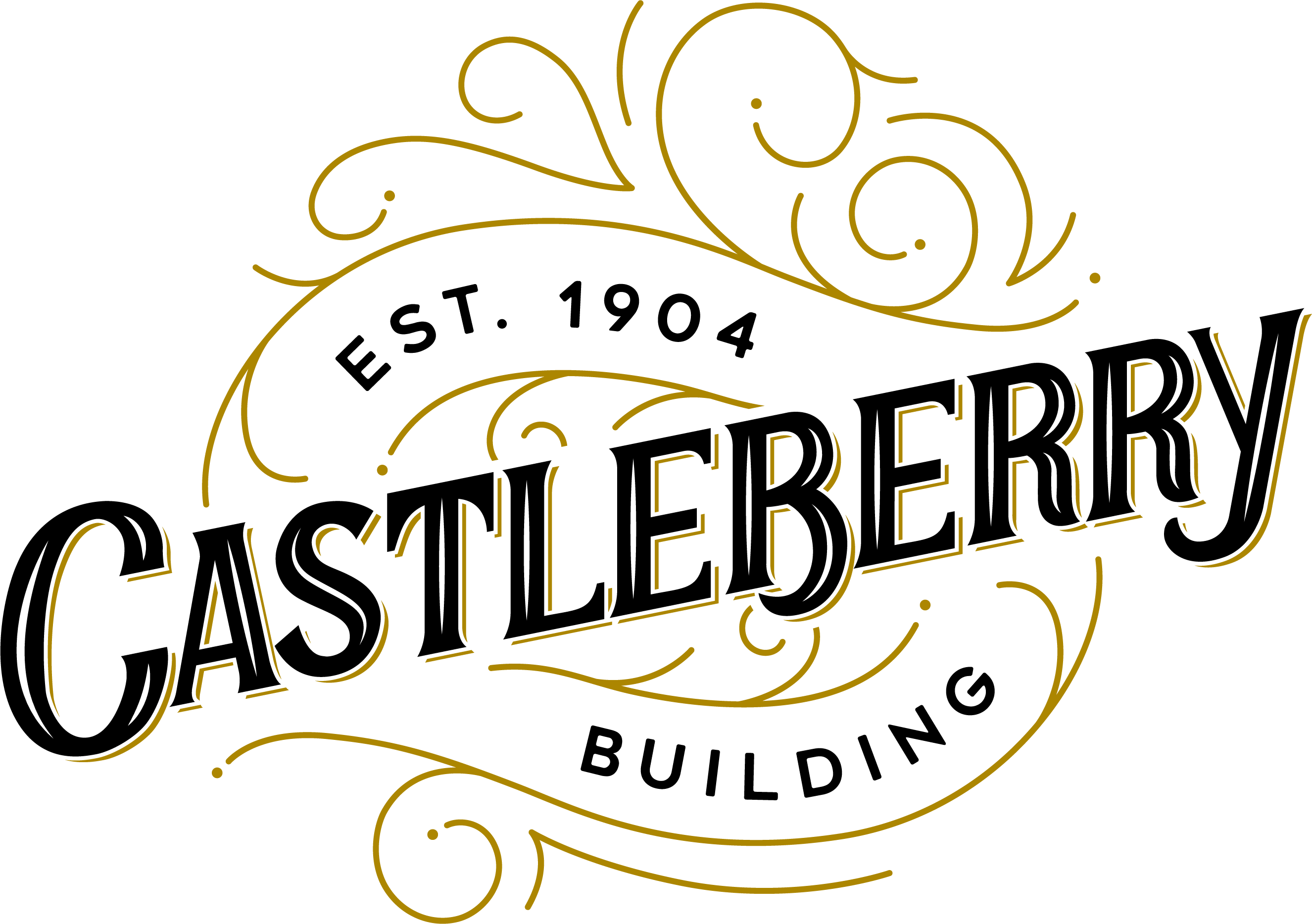History
Erected on the Corner lot of Salem Town Square, The Castleberry Building began what is now known to so many as Main Street America.
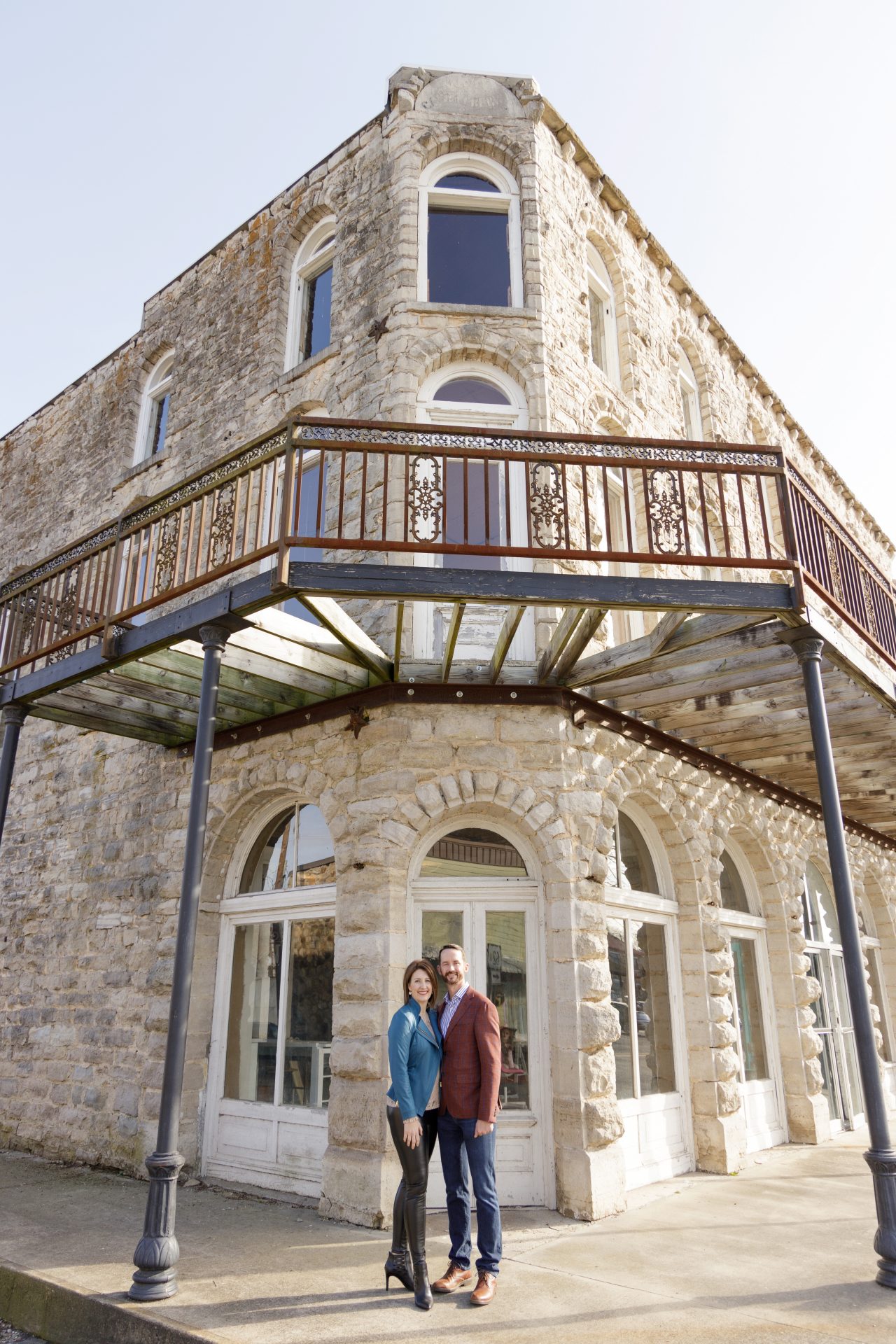
The Castleberry Building
ARCHITECTURE & DESIGN
The 1904 Castleberry Building is a two-story, limestone commercial building, is designed in a vernacular Romanesque style and stands as the tallest existing structure on the courthouse square. When first looking upon the structure, a person’s eyes are immediately drawn to the number of arched windows and doorways, that are evenly placed in rows across all three levels of the building. These large arched windows on the front (west) and north side of the building bring in so much natural light, it gives the illusion that the building is lit from within at all hours of the day. The exterior stone masonry is impeccable, considering the period in which the building was constructed. The building is rectangular in shape approximately 50 feet wide and 100 feet long, with a West-East orientation facing Main Street.
The light tan almost white coloring of the natural Limestone sets this building apart from many of the other stone constructed homes and businesses in the county. Majority of the stone buildings in Fulton, Sharp, and Izard Counties are constructed of sandstone, a much darker brown colored stone that is naturally available in the area. All four exterior walls, from the foundation up, are comprised of neatly stacked hand chiseled limestone blocks. The foundation stones are approximately 2 feet deep and 2-3 feet tall.
Our History
Two Brother's Venture Out
In 1900, this Main Street corner lot was purchased by B.H. Castleberry from his father-in-law, William Wainwright. The first building erected on this particular site was a wood framed, wood sided General Mercantile Store, Owned and operated by the Castleberry brothers. Unfortunately, a fire completely destroyed their building during the week of Christmas 1902 or 1903 (both years are referenced as dates of the fire in local newspaper articles) along with all their merchandise. Prior to constructing the first Castleberry Mercantile, the brother’s rented the bottom floor of an 1890’s stone structure that still stands to this day on the SouthWest corner of Salem Town’s square.
1900
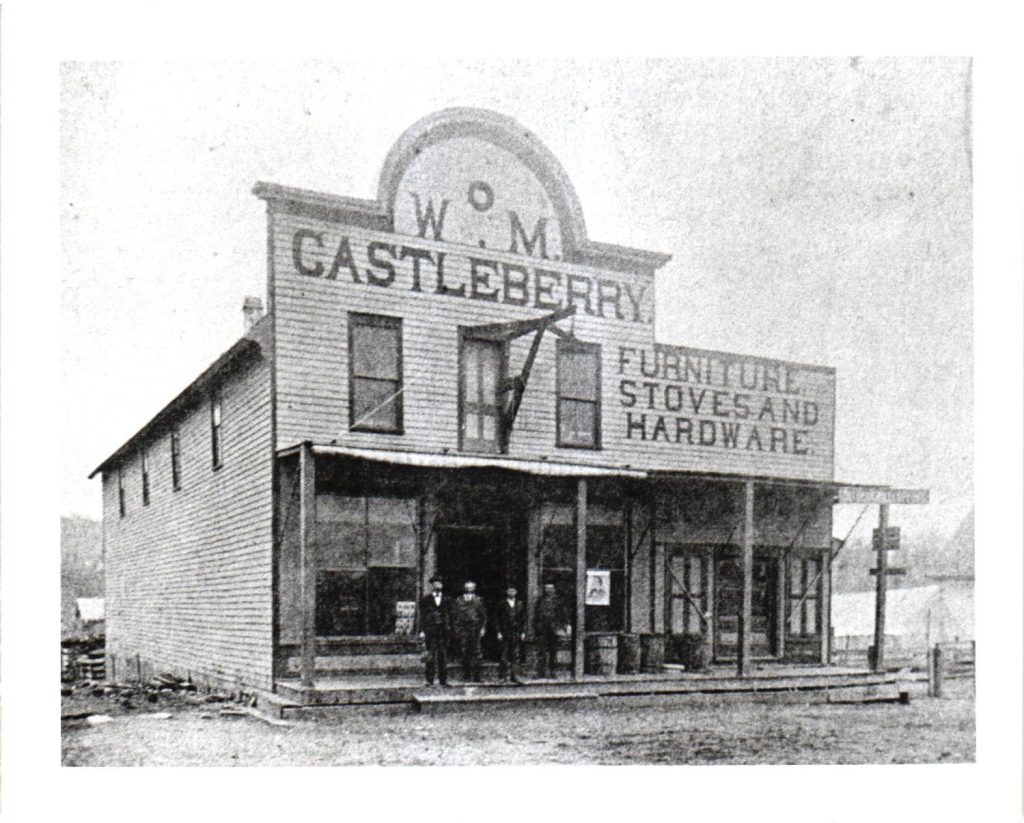
1904

Tragedy Turns into Prosperity
Brothers, Benjamin H. and William M. Castleberry are said to have been reliable and honest in all their transactions. They understood the mercantile business and used their enterprise to increase trade and influence in the town of Salem. It is said that they were men of culture and refinement. The Mercantile store was kept up to date both in stock and in methods of serving their customers. Poor taste, poor manners and any indication of poor breeding was not tolerated in their company. Store Clerks all wore coats while working, whereas it was considered to be in very poor taste for coatless gentlemen to wait upon lady customers. The W. M. Castleberry Mercantile was in operation from 1900 until the 1920’s. The exact closure date of the W.M. Castleberry store has not yet been determined or if simply the ownership of the mercantile changed hands.
Dr. Weathers
One of the building’s upstairs tenants was Dr. James (J.L.) Weathers known to his community simply as Doc Weathers. Dr. Weathers began practicing medicine in Salem 1909. He occupied the corner office on the 2nd floor of Castleberry Building. The upstairs adjacent rooms to this day still have painted numbers on the doorframes. Giving the impression each room was an assigned exam room for Doc Weather’s patients. A painted wooden sign hung in the ground floor window of building for years saying: “Dr. Weathers office UP STAIRS”. Doc Weathers kept his microscope on a table next to the corner window of his office. A local citizen has memory of being able to see the microscope in the window from the street below.
1909

1910's-1920's
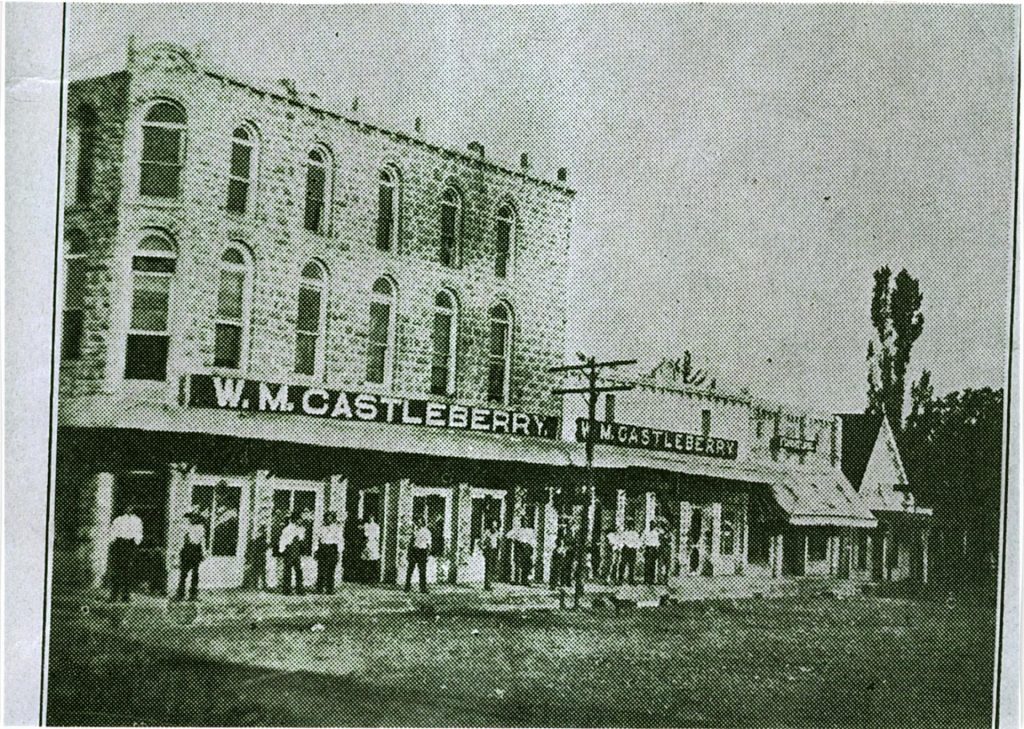
Arkansas Supreme Court Ruling
The building was subject to a lawsuit in Kay v. Castleberry, July 10, 1911 in which the court case was settled by the Arkansas Supreme Court. Court transcripts show that Mr. Castleberry gave land and the stone building in exchange for a stock of goods owned by M. Kopelman a merchant in Joplin, Mo. Kopelman who at the time was financially embarrassed. Mr. Castleberry also secured a loan to Mr. Kopelman in the amount of $3000 with the terms that the building would be responsible repayment of the debt. According to title research the building was deeded back to W.M. Castleberry and he retained ownership until his death. Mr. W.M. Castleberry died in 1919 is laid to rest in the Salem Town Cemetery.
Williams Mercantile
1930's-1940's
1950's
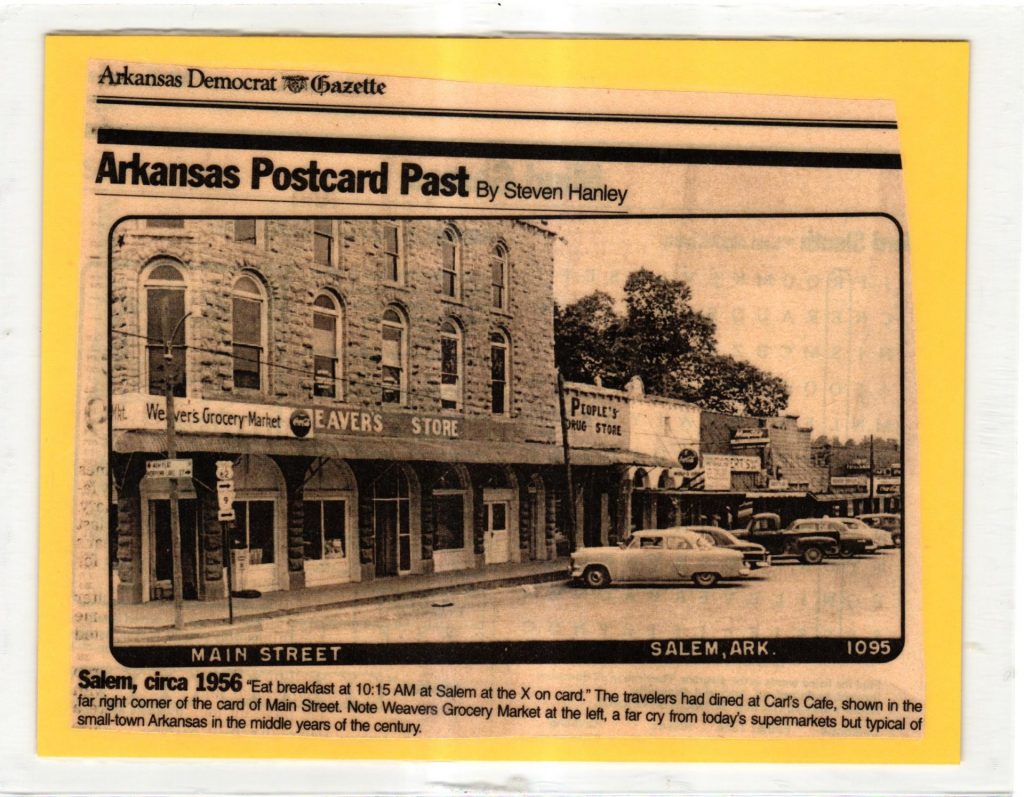
Weaver’s Store
From approximately 1950-1962 the building was owned by Robert and Vivian Weaver whereas Weaver’s Grocery Market and Weaver’s Store operated out of the first floor.
WALLACE & OWENS GROCERY
In the 1960’s Wallace & Owens grocery store and Agricultural feed mill became the tenants of the 1st level retail space. Wallace & Owens Grocery was operated by Mr. & Mrs. Hickinbotham of Salem. One of the West facing front windows still has lettering imprints of Wallace & Owens groceries on it and is only visible when the sun sets at just the right angle.
1960's
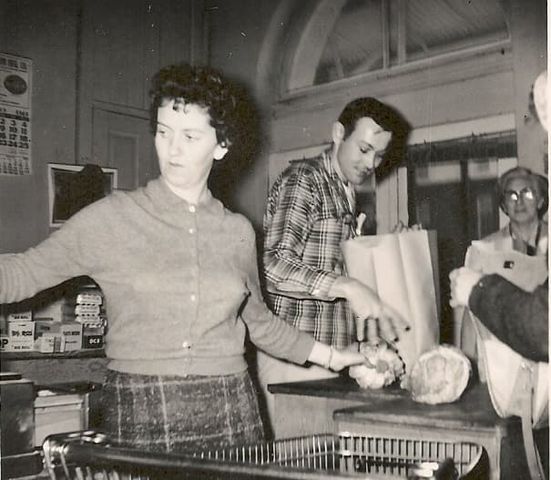
1970's

Dollar Store
In the 1970s the building was home to Fred’s National Dollar Store and Vic’s Dollar Store.
BILLS
BILLS retail store in the late 1980’s.
1980's

1990's-2000's
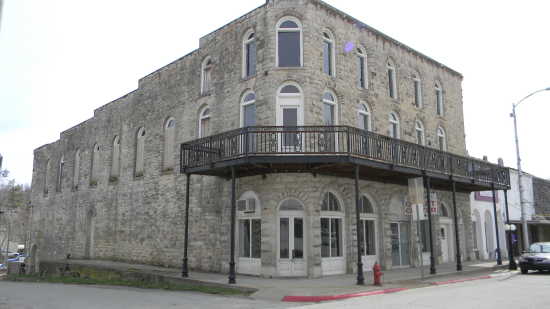
Premier Outlet Furniture
New owners come with new changes, the metal awning that had been affixed to the building for over 90 years was removed. A beautiful iron balcony was installed in its place. During this time the 1st floor of the building was used as a furniture showroom and the 2nd level used as retail furniture storage.
Shop On the Corner
The Castleberry Building was purchased in January of 2020 by John & Leslie Scribner, for the purpose of housing Leslie’s embroidery clothing company formerly known as Scribblez Creations. The main street 1st floor space was to be Leslie’s first retail location. Initially the Castleberry Shop on the Corner was to open in May of 2020, due to COVID-19 closures, family and work commitments: Castleberry “Shop on the Corner” new grand opening is scheduled for May of 2021.
2020's

2021's
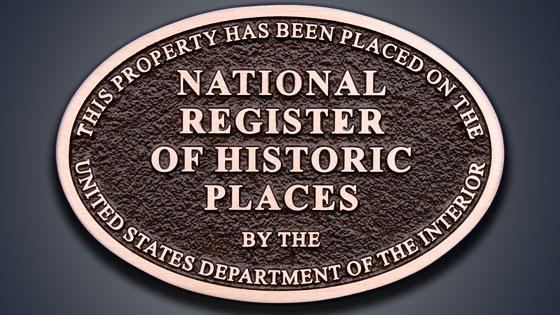
Added To National Register
The Castleberry Building is Nominated and Awarded to the National Register of Historic Places. The National Register is the country’s official list of historically significant properties.
